#first italian war of independence
Text

The armoury of the nobleman Uboldo invaded by Milanese insurgents to obtain weapons on 19 March 1848
by Carlo Bossoli
#carlo bossoli#art#armoury#ambrogio uboldo#milan#italy#nobleman#nobility#lombardy#five days of milan#palace#weapons#rioters#insurgents#revolutionaries#antiques#antique#armour#first italian war of independence#unification of italy#risorgimento#revolutionary year of 1848#revolutions of 1848#europe#european#history#italian#ambrogio maria martiniano uboldo#heraldry#banners
40 notes
·
View notes
Photo

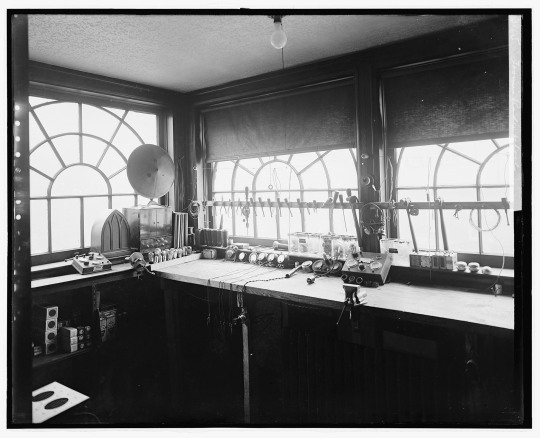
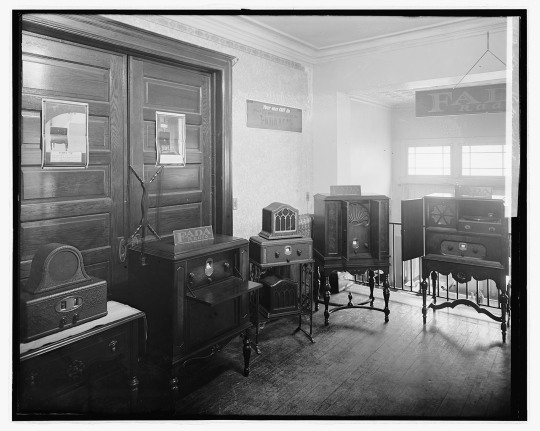
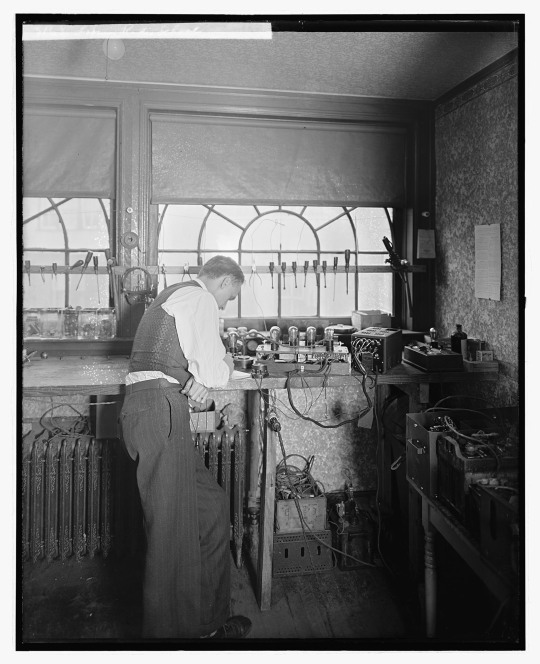
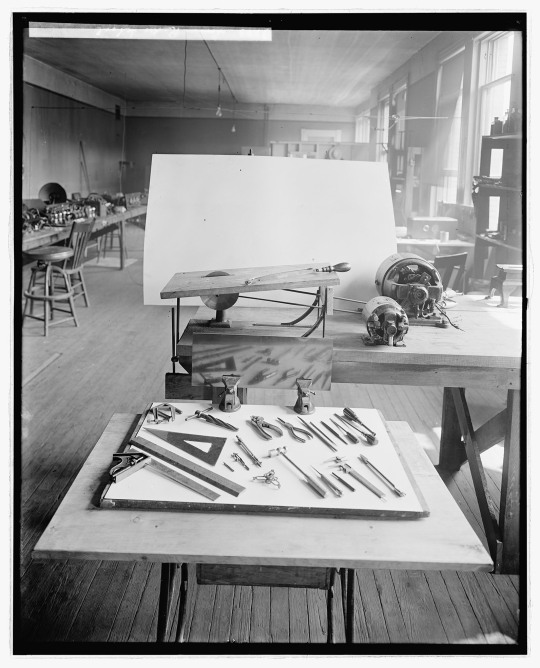


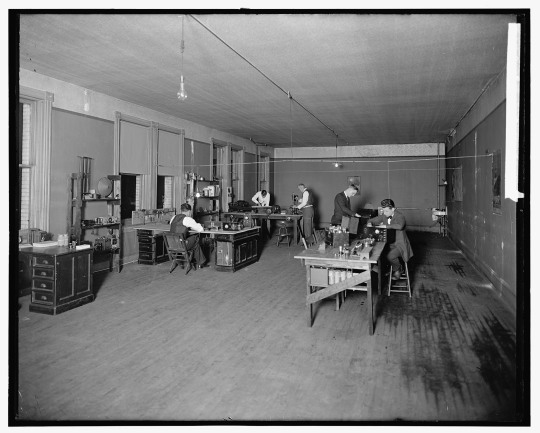
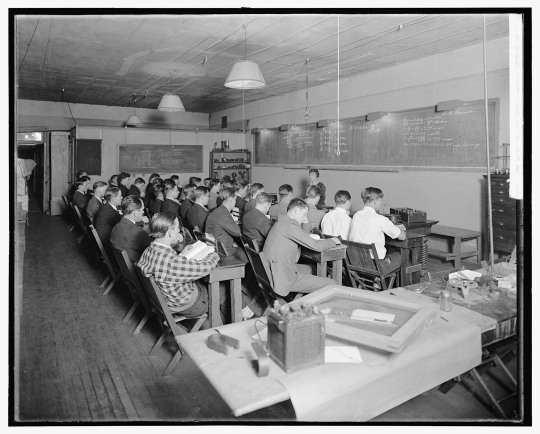
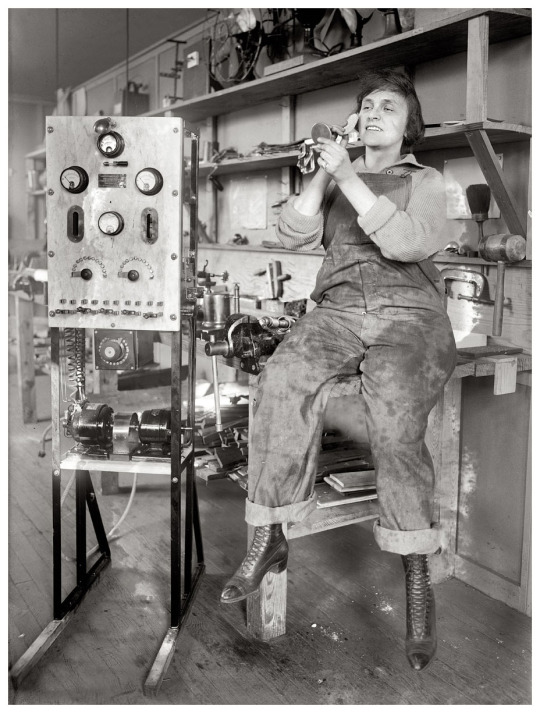
The Loomis Radio School, Washington D.C. ca. 1921.
The school was located at 401 Ninth St. N.W. and operated with the call letters 3YA. By 1920 it was offering a six month course enabling the graduate to obtain a first grade commercial radio license and by January of 1922 was offering a four year course with a degree in Radio Engineering bestowed on graduates.
The school was founded by Mary Texanna Loomis, pictured in the last photo.
Born August 18, 1880 near Goliad, Texas. She was the second child born to Alvin Isaac and Caroline (Dryer) Loomis. Though born on homestead in Texas in 1880, by 1883 her parents had returned to Rochester NY and then on to Buffalo where Alvin became president of a large delivery and storage company. Little is known of her early years, but appears she had a fairly middle-class up bringing. She seemed well schooled, with an early interest in music and language (she mastered French, German and Italian) Her early years were spent in Buffalo, NY and she later relocated to Virginia.
During the early years of World War I, she became interested in the new field of wireless telegraphy. There was a family precedent; her cousin, Dr. Mahlon Loomis, had conducted early wireless experiments with moderate success and may in fact have been the first person, in 1865, to send and receive wireless signals.
Mary soon became proficient enough in wireless telegraphy to be granted a license by the United States Department of Commerce. Thoroughly fascinated with the field now called “radio”, she decided to turn her expertise into a career. Also, she wanted to do something that would honor her pioneering ancestor. Her idea was to do this by founding a radio school.
Though radio was indeed, for many years, a profession dominated by men, Mary Loomis around age 40 took no notice and in 1920 founded the Loomis Radio School in Washington, D.C. and it quickly gained an excellent reputation. Ms. Loomis set high standards for the school and it attracted students not only from the United States but Europe and Asia as well. Loomis enjoyed teaching as much as she enjoyed radio itself. In an interview, she said, “Really, I am so infatuated with my work that I delight in spending from 12 to 15 hours a day at it. My whole heart and soul are in this radio school.”
As president and Lecturer of the Loomis Radio School, Mary authored a definitive book on radio, named “Radio Theory and Operating.”
By January 1922 the school was offering a four year course with a degree in Radio Engineering bestowed on graduates. Loomis also intended that her students understand more than just the inner and outer workings of radio. In addition to a radio laboratory (with equipment constructed almost entirely by Mary herself), the school maintained a complete shop capable of teaching carpentry, drafting and basic electricity. She reasoned that many of her graduates might find themselves at sea, or in other challenging situations and she wanted them adequately prepared. “No man,” Ms. Loomis said, at the time, “can graduate from my school until he learns how to make any part of the apparatus. I give him a blueprint of what I want him to do and tell him to go into the shop and keep hammering away until the job is completed.”
The school appears to have been in existence at least through the early 1930's, but it has not been possible to find information after that.
In an interview given to H.O. Bishop of the Dearborn Independent in 1921, Mary was asked: “What sort of young men are taking up the radio profession?” to which she replied:
“The Kind who have grit and want to get there! Virtually all of them are ambitious and enthusiastic over the possibility of visiting every nook and corner of the world. My students are not only enrolled from various sections of the USA and Canada but from many foreign countries, such as Sweden, Ireland, England, Poland, Russia, Austria, Rumania and the Philippines. One of the brightest pupils I ever had was Prince Walimuhomed of Far-away Afghanistan. He was an extremely modest young man, keeping his real identity a secret until after graduating. He said he had no idea of earning his living by working at radio, but just wanted to know all about it. He does.You have no idea how much happiness I get out of the success of each individual graduate. My boys keep in touch with me from all parts of the world. Scarcely a day goes by that I do not get some trinket or postcard from some remote section of the world. I have made the wonderful discovery that the only way for me to get happiness for myself is to make some one else happy. I find that I am making these young men happy by teaching them every phase of the radio business so that they can earn a comfortable living for themselves and their dependents and at the same time, see the great big beautiful world.
As far as we can figure out, Mary Loomis left Washington D.C. around 1935 and moved to San Francisco where she worked as a stenographer. She died in 1960 and is interred at Woodlawn Memorial Park, Colma, CA.
Source
144 notes
·
View notes
Note
The first Godfather movie is on Y*utube for free now! I rewatched it and it was just as great as I remember, so on to Part 2. But then I went on redd*t to check out some Godfather threads, and was disappointed to see so much discourse on who was hotter, Apollonia or Kay. And why there is so much hate against Kay, mainly because she is “too feminist” and “educated”, doesn’t “obey or support” Michael, and that she’s not as beautiful as Apollonia. All in all a disappointing experience. I didn’t see any male characters reduced to how handsome they were or were not : /
Let me help you there, then, Nonnie - of course Michael was destined to become the new Don - he is far prettier than Fredo, Sonny or Connie. And Vito was prettier than Don Fanucci all along! 😎
All this "Kay isn't good enough for Michael" discourse - he pursued her. Both in film 1 and 3. And the only time I felt Kay was weak, was when she said yes when he returned. Imagine, here is your war hero boyfriend who says he wants a clean American life... and then he shoots two people, leaves the country, ghosts you for a year, tells you he has become a career criminal and then proposes marriage. She should have said no, she really isn't open to this, but is this man, who she knows has people killed with no repercussions, a man she can refuse? As little as Vitelli could really refuse Michael's request to court Apollonia. The first thing Michael says to him is: "If you don't do what I want, I will kill you, and what I want is meet your daughter."
But alright maybe love isn't rational. Maybe they loved each other still. Kay really wasn't suited to mob life and that is on Michael. He knew who she was and it didn't matter, he wanted her. He had barely a clue who Apollonia was, her with no English and he with broken Italian. It didn't matter, he wanted her. Kay would have been perfect for Michael Corleone, aspiring senator, which is what he was when they met. But he didn't care Kay was not suited for who he was now. Why didn't he grieve Apollonia and find another mob wife? Why didn't he remarry after their divorce? Even when he proposes Kay is already reluctant and Michael pushes and pushes and pushes. She must represent something he actually does want, still.
But it's always the woman's fault when relationships don't work out, isn't it? No Kay wasn't a good mob wife. She didn't want to be one. She got out with her children - that is something Michael never managed. And Apollonia is something many men imagine they want, but when they have it, they get bored. I am not saying Apollonia wasn't intelligent, but if you get told to completely erase yourself into motherhood, which means you can't offer more than comfort and sex - that's not enough for a lot of people. And it's not like these women wouldn't have had more to offer but everytime they try they get shut down. And what you get then is Carmella, which may have suited Vito - that man who craved domesticity above all else - but even Sonny and Michael needed more input from her than she could give. So Michael fell for the total opposite. And maybe Apollonia was a fierce presence who might have become to Michael what Connie became, but we can't know. We don't know what she and Michael talked about. We know she was very beautiful and made Michael laugh, and she may or may not have had a slight independent streak. That's it.
I feel that they might have worked because they clicked emotionally and Apollonia knew the life. But Michael didn't look for someone like her again. He looked for Kay, again and again and again.
If she doesn't suit him - and no, she doesn't suit a Don - Michael should try to figure out what itch he was trying to scratch with her. Oh, and that obedience shit - in my experience, boys who go on about that are deeply insecure about something. They couldn't get a well trained dog to obey them, let alone a person!
All these men who think they're owed power while being unwilling to do what they'd have to to obtain it, always want women to fawn. Men who have what it takes to gain power, should they aspire to, usually spend time honing a skill. They rarely throw their weight around putting others down. No matter where they start, the bottom or the top - they put the work in. Michael did, Sonny did, and Fredo mostly complained. As much as we see anyway. If Fredo had done a good job with what he was given, or would have found himself an opportunity, he would have won Michael's respect. Not position,but respect, like Tom. Instead Fredo demanded respect for his position as an older brother.
That's the type of man who whines about having women obey him.
26 notes
·
View notes
Text


This is a message to my black brothers and sisters
Learn about your history
Ethiopia is one of the oldest countries in Africa; the emergence of Ethiopian civilization dates back thousands of years. Abyssinia or rather "Ze Etiyopia" was ruled by the Semitic Abyssinians (Habesha) composed mainly of the Amhara and Tigray, the Cushitic Agaw. In the Eastern escarpment of the Ethiopian highlands and more so the lowlands was the home of the Arab-descended Harari that founded Sultanates such as Ifat and Adal and the Afars. In the central and south were found the ancient Sidama and Semitic Gurage, among otheres. One of the first kingdoms to rise to power in the territory was the kingdom of D'mt in the 10th century BC, which established its capital at Yeha. In the first century AD the Aksumite Kingdom rose to power in the modern Tigray Region with its capital at Aksum and grew into a major power on the Red Sea, subjugating South Arabia and Meroe and its surrounding areas. In the early fourth century, during the reign of Ezana, Christianity was declared the state religion. Ezana's reign is also when the Aksumites first identified themselves as "Ethiopians", and not long after, Philostorgius became the first foreign author to call the Aksumites Ethiopians.[The Aksumite empire fell into decline with the rise of Islam in the Arabian peninsula, which slowly shifted trade away from the Christian Aksum.[citation needed] It eventually became isolated, its economy slumped and Aksum's commercial domination of the region ended.The Aksumites gave way to the Zagwe dynasty, who established a new capital at Lalibela before giving way to the Solomonic dynasty in the 13th century. During the early Solomonic period, Ethiopia went through military reforms and imperial expansion that allowed it to dominate the Horn of Africa.
How did Ethiopia Resist Imperialism?
Ethiopia, formerly Abyssinia, is one of the world’s oldest countries. Dating to around 400 BCE, the region is documented in the in the King James Version of the Bible as the Kingdom of Axum. Along with Rome, Persia, and China, Axum was considered one of the four great powers of the era. Throughout the millennia of its history, the willingness of the country’s people—from farmers to kings—to come together as one, coupled with its geographic isolation and economic prosperity, helped Ethiopia score decisive victories against a series of global colonialist forces.
Ethiopia is considered “never colonized” by some scholars, despite Italy's occupation from 1936–1941 because it did not result in a lasting colonial administration.
Seeking to expand its already considerable colonial empire in Africa, Italy invaded Ethiopia in 1895. In the ensuing First Italo-Ethiopian War (1895-1896), Ethiopian troops won a crushing victory over Italian forces at the Battle of Adwa on March 1, 1896. On October 23, 1896, Italy agreed to the Treaty of Addis Ababa, ending the war and recognizing Ethiopia as an independent state.
On Oct. 3, 1935, Italian dictator Benito Mussolini, hoping to rebuild his nation’s prestige lost in the Battle of Adwa, ordered a second invasion of Ethiopia. On May 9, 1936, Italy succeeded in annexing Ethiopia. On June 1 of that year, the country was merged with Eritrea and Italian Somalia to form Africa Orientale Italiana (AOI or Italian East Africa).
Ethiopian Emperor Haile Selassie made an impassioned appeal for assistance in removing the Italians and re-establishing independence to the League of Nations on June 30, 1936, gaining support from the U.S. and Russia. But many League of Nations members, including Britain and France, recognized Italian colonization.
It was not until May 5, 1941, when Selassie was restored to the Ethiopian throne, that independence was regained.
Ethiopia's ability to resist being swept up in the "Scramble for Africa" can be credited to the stability of its longstanding imperial government, beginning with the Abyssinian Empire in the 13th century, and lasting into the late 20th century, with the exception of a brief Italian occupation during the 1930s. King Menelik II, the Emperor during the period of rampant European exploration and colonization in Africa, was careful to cultivate an alliance with the smaller surrounding kingdoms of North Africa, and with European powers including Italy and Russia. When Italy began to turn the sights of their imperial ambitions toward Ethiopia, the Ethiopian military became the only African kingdom able to successfully resist the military might of European colonial power, using Russian-supplied weapons to defeat the Italian invading force at the Battle of Adwa in 1896. In the aftermath of the battle, in exchange for permanent recognition as an independent empire, Menelik II granted Italy the right to claim the neighboring territory of Eritrea under their imperial umbrella.
Ethiopians have a history of taming lions.
Many Emperors kept pet lions including Halie Selassie. Occasionally visitors like Kwame Nkrumah could pet one of the lions!
This practice of keeping lions is said to date back thousands of years to the Axumite period.The descendants of the Royal Lions currently live in the Addis Ababa zoo.
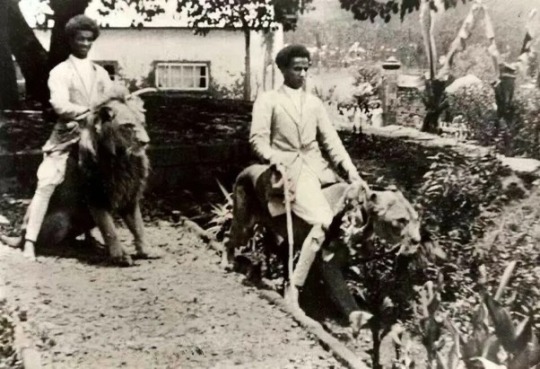
Meet his imperial majesty, the King of the Jungle.
And if, with his thick, shaggy mane Challa seems to have something of a frisky regal air about him - it's because he knows that he is a genuine blue blood.Challa is a direct descendant of Mochuria and Mollua - royal lions, which the late Emperor Haile Selassie kept as pets. The Emperor's practice of keeping pet lions is said to date thousands of years back to the Axumite period.Years ago in Ethiopia, Lions were pets to the people, some were used like donkeys, some like dogs kept at home. Emperor Haile Selassie of Ethiopia had lions he kept as pets, while some Ethiopians could even ride on them. These were not wild lions, they grew up with humans and became domesticated.They didn't go after human blood or other animals, lions roamed around the streets of Ethiopia and live was beautiful with them. Ethiopia is in East Africa, it's a rugged, landlocked country split by the Great Rift Valley, Ethiopia is a place of ancient culture, they believe and still hold on to ancient affairs.
Any lion that goes wild was immediately hunted killed, they were only killed if they kill a human and not animals like goats and chickens. They forbid killing and eating of any lion because lions were pets used in different palaces.
Ethiopia as a country had its origin in about 980 B.C., which makes it one of the oldest nations in the world.
Due to this very long history and an unmatched diversity of people and cultures, the country has often been described as a “museum of peoples”. With such a highly diverse population, Ethiopia houses an intricate tapestry of language and ethnic groups.
Also nicknamed the “Land of 13 Sunshine’s”, Ethiopia is often described as one of the most enthralling and enchanting places in the world – and definitely in Africa.
Ethiopia may not be the first place any traveller think of when planning or booking a next holiday, but it may just as well soon be the case. As African country Ethiopia can boast about having been at peace for at least the previous 15 years or more years and its economy is consequently one of the fastest growing in the world.
With the added bonus of an astounding diversity of landscapes, mixture of cultures and history that tracks back to when homo sapiens first started to raise itself up onto two legs, a traveller suddenly may look forward to a surprising and breath-taking travel destination.
But talking about planning and holiday dated, you probably didn’t know that this unique nation even has its own calendar?
This is but one of a myriad fascinating facts about the country, of which a number are discussed in this article. Looking at the country’s ancient and statutory history, its religion, culture, people and natural phenomena, here are at least 44 random but fascinating facts that you can ponder in anticipation of a visit to this eastern African country in the near future:
Fact number 1 – The oldest people in the world probably lived here.
Fact number 2 – Ethiopia is the oldest independent country in Africa and the only African country that could evade colonial rule.
Fact number 3 – Ethiopia was one of the first African forces to achieve a significant victory over a European colonial power.
Fact number 4 – Ethiopia has a rich history of rulers, including emperors and queens.
Fact number 5 – Ethiopia is perceived to be the diplomatic capital of the African continent
Fact number 6 – Ethiopia is the country with the second highest population in Africa, and with almost 1,5 % of the world population.
Fact number 8 – Ethiopia has the most orphans in the world.
Fact number 10 – Addis Ababa is the highest capital city in Africa.
Fact number 11 – More than 200 dialects are spoken by the peoples of the country.
Please like and share so others can see, drop your comments below and let me know what you think.
98 notes
·
View notes
Text
Queen of Bohemia
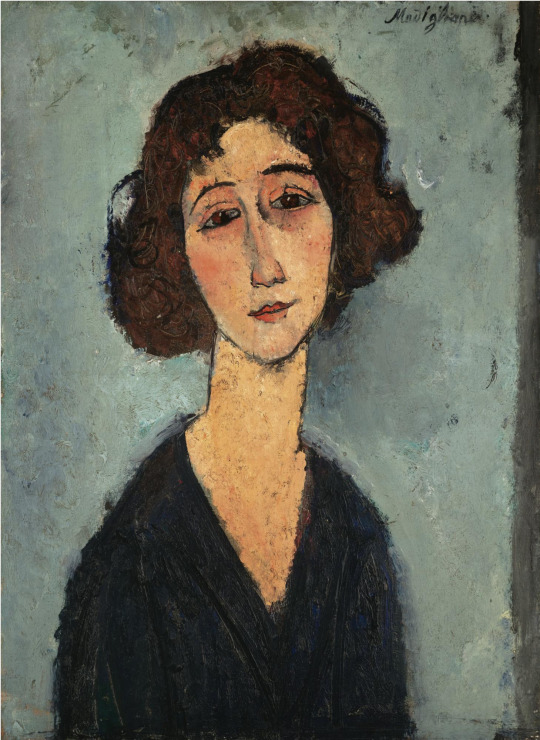
Amedeo Modigliani -Jeune Femme (Nina Hamnett) - 1917
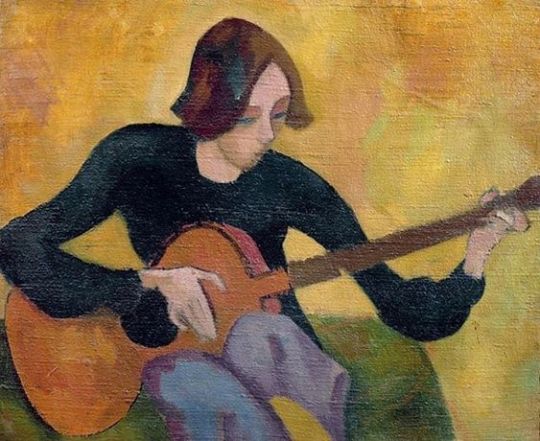
Roger Fry - Nina Hamnett avec une guitare - 1917
Nina Hamnett (1890–1956) was a Welsh artist and writer, and an expert on sailors’ chanteys, who became known as the Queen of Bohemia. Flamboyantly unconventional, and openly bisexual, Hamnett once danced nude on a Montparnasse café table just for the “hell of it”. She drank heavily, was sexually promiscuous, and kept numerous lovers and close associations within the artistic community. Very quickly, she became a well-known bohemian personality throughout Paris and modelled for many artists. She went on to have a love affair with Brzeska, and later with Amedeo Modigliani and Roger Fry.
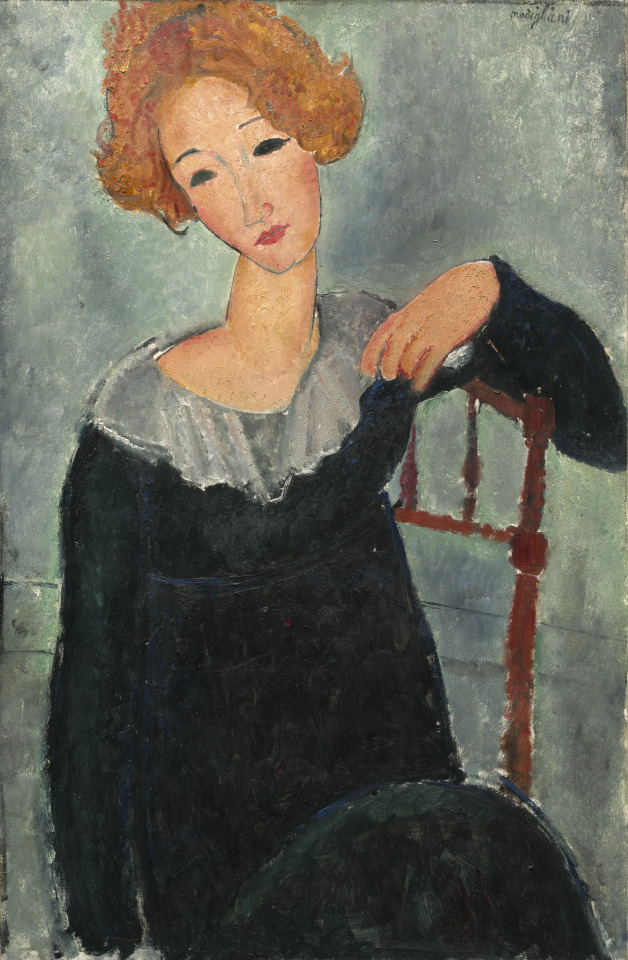
Amedeo Modigliani - Woman with Red Hair (Nina Hamnett) - 1917

Nina Hamnett - Self Portrait - 1913
British painter, designer, and illustrator, famous more for her flamboyant bohemian life than for her work. She was born in Tenby, Wales, the daughter of an army officer, and studied at various art schools in Dublin, London, and finally Paris. On her first night there she met the Italian painter Amedeo Modigliani. He introduced her to Picasso, Serge Dighilev, and Jean Cocteau, and she went to live at the famous artist’s residence of La Ruche which housed many other Bohemian artists and modernist writers. It was there that she met the Norwegian artist Roald Kristian (also known as Edgar de Bergen), whom she married in 1914. She seems to have been relieved when he was deported as an unregistered alien during the First World War; they never saw one another again.
Like other women at the time reveling in a newfound independence, she had her hair cut short in a ‘crophead’ style (what we would now call a basin cut) and she wore eccentric clothing:
"I wore in the daytime a clergyman’s hat, a check coat, and a skirt with red facings … white stockings and men’s dancing pumps and was stared at in the Tottenham Court Road. One had to do something to celebrate one’s freedom and escape from home."

Roger Fry - Nina Hamnett - 1917
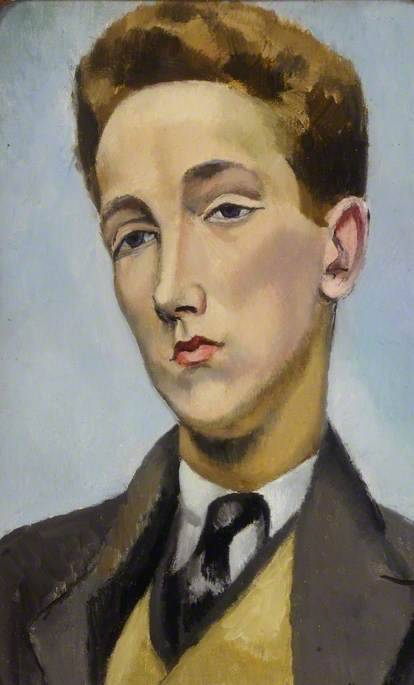
Nina Hamnett - "Rupert Doone" - Dancer - 1922

Nina Hamnett - "Dolores" - 1931
From 1913 to 1919 Hamnett worked for Roger Fry's Omega Workshops; Fry (with whom she had a love affair) painted several portraits of her. In the 1920s, she spent much of her time in Paris, where once again she knew many leading figures of the avant-garde, including Jean Cocteau and the composers Satie and Stravinsky.
During the 1920s (and for the rest of her life) she made the area in central London known as Fitzrovia her home and stamping ground. This new locale for arty-Bohemia was centred on the Fitzroy Tavern in Charlotte Street which she frequented along with fellow Welsh artists Augustus John and Dylan Thomas, making occasional excursions across Oxford Street to the Gargoyle Club in Soho.

Nina Hamnett - Illustrated Osbert Sitwell's "The People's Album of London Statues" - 1927
However, she often returned to London for exhibitions of her work, which included portraits, landscapes, interiors, and figure compositions (notably café scenes) in a robust style drawing on various modern influences. In addition to paintings, she made book illustrations (spontaneous pen-and-ink drawings), notably for Osbert Sitwell's The People's Album of London Statues (1928). From the 1930s the quality of her work declined, partly because of the influence of alcohol.
In 1932 she published a volume of memoirs entitled Laughing Torso, which was a best-seller in both the UK and the USA. Following its publication she was sued by Aleister Crowley, whom she had accused of practicing black magic. The ensuing trial caused a sensation which helped sales of the book, and Crowley lost his case.

Hamnett enjoying herself with some new friends
Her success in this instance only fuelled her downward spiral, and she spent the last three decades of her life propping up the bar of the Fitzroy trading anecdotes of her glory years for free drinks. She took little interest in personal hygiene, was incontinent in public, and vomited into her handbag.
Her ending was as spectacular as had been her previous life. Drunk one night she either fell or jumped from the window of her flat and was impaled on the railing spikes below.
#art#Nina Hamnett#Laughing Torso#Osbert Sitwell#artist#Queen of Bohemia#amedeo modigliani#paintings#drawings#roger fry#aleister crowley#picasso#hamnett#illustrations#modigliani
61 notes
·
View notes
Text
A Guildsman Goes Forth to War, World-Building Part II
Historical Departures:
As you might imagine, in a world that's experienced quite a significant change almost a thousand years previously, Europe circa 1500 AD in A Guildsman Goes Forth to War is not the same as the one from our timeline. Names and places are familiar but distinct, and the borders of entire countries have shifted because a battle that went one way in one timeline went the other in this.
For the purposes of this novel, I wish to draw your attention to two more significant historical departures that will be the most central to the main characters and the plot.

The first departure has to do with the outcome of the Franco-Flemish War at the beginning of the 14th century. As in our timeline, the war began as a conflict between Phillip the Fair (although in this world, he was King of Gallia, rather than of France) and the Count of Flanders, and turned into a Flemish revolt against the overlordship of France that enraged and terrified the French chivalry after the Guldensporenslag. Unlike our timeline, however, the Count of Flanders offered marriage of his younger daughter to Rudolf I of the Empire after Phillip blocked his marriage alliance to Edward of Anglia.
While sadly in this timeline the Flemish cause did not ultimately win victory either, the Imperial marriage meant that when French forces pushed the Flemings' backs to the wall at Zierikzee and Mons-en-Pévèle, they were met by an Imperial expeditionary force. Rudolf I was no partisan of the burghers, but neither was he about to have Phillip the Fair as a neighbor. And so instead, the Low Countries became a buffer zone between the Kingdom of Gallia and the Sacrum Imperium.
Major warfare between Gallia and the Empire was avoided. (After all, Phillip had his hands full with Edward and Rudolf desperately needed that bastard Pope to agree to his coronation.) As for the people who had fought so hard for their freedom, the militias were disbanded, the burghers were stripped of much of their former independence, all commoners were forbidden to carry arms, and the local nobility were carefully balanced between Gallician and Imperial lines to keep the peace. Everyone returned to the business of spinning thread into gold. But still the memory of the goedendag lingered...

The second, more recent event is the rise of the Lega di Mille Communi. At the height of the Wars of the Guelphs and Ghibellines, a number of Italian communes hatched a conspiracy "as to dwarf any previous such venture in the history of man." To end the constant fighting and free themselves from the ambitions of Pope and Emperor both, these communes pretended loyalty to both factions, offering loans and fighting men while working within the walls of their own cities to plant spies, provacateurs, and assassins among the leading families of the signorile.
This silent campaign built to its height at the Second Battle of Legnano, where the combined forces of Pope Boniface VIII and his Guelph allies and Emperor Louis IV and his Ghibellines met again at that place honored in song and memory as the place where Barbarossa was humbled. When the battle was fully joined, a pre-arranged signal was given and the condottieri on both sides turned on their own armies, making a daring charge for the command tents of Pope and Emperor alike. In the confusion and chaos, those great and noble persons were taken captive in the name of the newly revealed Lega di Mille Communi.
The shockwave echoed across all Europe. For six months, the greatest secular and religious authorities in Christendom lingered in golden fetters, while Kings and Cardinals from ultramontano threatened foreign intervention. Across northern and central Italy, a civil war raged in the streets and in the fields, but the Guelph and Ghibelline partisans found themselves leaderless and undirected, unwilling to combine with their hated enemies against the professional forces of the well-heeled Lega who toppled government after government from within and without. When the dust had settled, a "Treaty of Perpetual Liberty" was signed by the Empire and the Papal See alike. Under the terms of this pact, the Lega was recognized as independent of both, the sole legitimate sovereign of all territories south of the Alps.
Naturally, this document signed under heavy coercion was immediately repudiated the moment the principals were freed (albeit under heavy bond). Louis IV declared war the moment he set foot on German soil, and Boniface would have done the same in his own territories had he not dropped dead of a rage-induced stroke. For another ten years, the Lega fought to uphold the Treaty, and ultimately narrowly triumphed thanks to a crucial alliance with the Swiss Confederacy that bled the Emperor's legions white as they tried to fight their way south through the Alps, and thanks to a deadlocked Papal conclave (kept that way by heavy bribery and constant espionage) that allowed the Lega to fight on one front at a time.
But in the end, the Lega endured because of the simple principles of its constitution. Under the articles of federation and defensive alliance, each commune was largely free to govern itself within certain boundaries. No separate alliance or agreement with any foreign state was allowed. Limited wars between Communi were allowed after arbitration, but not to the point of outright conquest of one city-state over another. Contracts would be honored across the Lega, and exchange rates between local currencies would be fixed at yearly conferences. Violators would face the combined forces of every other Communi bound together in fraternal oath.
One Pope after the other was crippled with debt until they had to sell the Donation of Pepin city by city and valley by valley, culminating in a truly Croesian subvention from the Lega for the new Prince of the Vatican. The Kingdom of Naples tried again and again to fight its way up the boot, only to find itself mired in costly sieges ahead and suspiciously well-funded peasant rebellions behind, until eventually the House of Anjou declined into civil war. The Lega was not a peaceful country after independence, but the fighting kept their condottieri well-trained and well-paid, and a new cultural ethos emerged among the Communi that they would uphold as jealously as the virginity of their kinswomen: "I against my brother, my brother and I against my cousin, my cousins and I against a foreigner."
And so for the first time since the time of the Divine Julius, one of the major powers of Europe was a Republic(s). A specter had begun to haunt the crowned heads of Christendom...
18 notes
·
View notes
Text
Wrapping Up the Republic with Harriet Flower
Alright! I posted my review of the book overall yesterday, but let's dig into the final chapters of Harriet Flower's Roman Republics anyway, because her arguments here are interesting even apart from the rest of the book. Plus, this is where we get to Marius, Sulla, and other familiar faces for late republic nerds like me.
According to Flower, Julius Caesar wasn't the man who broke the republic. Nor Pompey, or Cato, or anyone in their generation. She doesn't minimize their mistakes, but she believes they grew up in an an already-broken system, thanks to Lucius Cornelius Sulla.
Rewind a bit to the Social War, 91-88 BCE. Flower argues that this was the republic's first true civil war, and that it broke out due to Rome failing to extend citizenship to the Italian allies in peacetime. I think she overstates our certainty for the war's cause - it's not actually clear if most Italians sought citizenship or independence. However, I agree with her that the Social War left deep and lasting wounds at all levels of Roman and Italian society, and the republic never really re-stabilized afterward.
The Social War in turn feeds into the conflict between Sulla and Marius. She also argues that the simultaneous crises of the Jugurthine, Cimbric, and Second Servile Wars lent credence to the idea that one strong leader was more competent and dependable than the unpopular Senate. In this case, said leader was Gaius Marius. His achievements in these wars gave him the base of support needed to make a highly irregular bid for the Mithridatic command - deposing Sulla, who in turn marched on Rome.
Flower portrays Sulla very negatively. And I understand why, but it's odd that she doesn't mention he was Rome's duly elected consul at the time, and that the referendum deposing him was unprecedented, and possibly forced through by violence. He did, in fact, have a legal argument for why he refused to step down, and this was probably one of the reasons his soldiers followed him to Rome. Flower attributes the soldiers' motives to merely wanting the booty of war for themselves - another example of her assuming that poor or working-class men had few political opinions of their own, little love for democracy, and merely acted as extensions of their generals.
(You may have noticed I am not a fan of that assumption.)
I do appreciate that Flower draws a throughline from the violence associated with the Gracchi, to the death of Saturninus, to the Social War, and then to Sulla's first march on Rome, because it helped me see how violence in the city, and shows of force from the Senate, had been escalating since before Sulla had even joined the Senate. This does not excuse his actions, but does help explain why he may have thought it legally justified, along with his own self-preservation. (Flower does not mention that a few weeks before, Sulla had nearly gotten killed by a riot in Rome instigated by the same tribune who then tried to depose Sulla and give the Mithridatic command to Marius!)
So, Sulla marches on Rome, outlaws twelve enemies; Sulla leaves Rome; Marius and Cinna besiege and take over Rome; Marius dies of too many consulships and Cinna, undeterred, proceeds to keep giving himself consulships. Flower doesn't hesitate to criticize the Marians, either. She plausibly argues that Rome was a dictatorship in all but name during Cinna's tenure.
However, she reserves the greatest part of these final chapters for critiquing the new laws Sulla imposed after he retook the city and became dictator. Flower believes that, rather than being a "return to tradition," that "strengthened the Senate," Sulla's constitution was a radical departure in several ways, and this unwelcome novelty undermined the Sullan Senate's credibility.
She makes good points in support of this argument:
That enfeebling the plebeian tribunes was radical, unpopular with the people, and greatly damaged the government's legitimacy in the eyes of the people.
That doubling the size of the Senate while purging the opposition leaders, on top of all those who'd died in the Social War, created a horrific brain drain effect and paralysis.
That few people could take the rule of law seriously after Sulla had imposed it by force of arms, not through voting.
That political discourse in and out of the curia was greatly damaged by the above points. Particularly because the tribunes could not propose and discuss legislation in contios for some time. (I have to wonder if strangling these open-air, traditional forms of discourse may have caused people to turn to violent collegia, and uprisings like Lepidus Senior's and the Catilinarians, as extreme alternatives for people who felt oppressed. But that's just speculation.)
She doesn't talk much about the proscriptions, but I would also add those as a major force of destruction for both public debate and government credibility.
I'm not sure I agree with all her points, though. For instance, she claims that Sulla attempted to assert a government ruled by laws instead of custom, with a greater focus on the court system to enforce these laws on senators. I want to see more evidence to back this up.
Much of Sulla's constitution was dismantled in the decade after his death. Flower calls this the era of Sulla's republic, up till 49, and she sees it as a fundamentally unstable time because of what had happened before. She's rather harsh toward all of Cicero's generation and how they handled the situation, but she especially thinks the first triumvirate shut down republican politics from 59 onward.
I really think she overstated the first triumvirate's power. Robert Morstein-Marx and Erich Gruen have comprehensively demonstrated that Caesar, Pompey and Crassus' alliance only operated intermittently, lost as many elections, plebiscites, and trials as they won, and doesn't seem to have functioned very differently from alliances like Catulus-Piso-Cato. I also think she is flat out wrong in attributing the breakup of Caesar and Pompey's alliance to the deaths of Crassus and Julia in 54 - we don't actually see Caesar and Pompey break apart until four years later. For details, see my liveblogs of Morstein-Marx's Julius Caesar and the Roman People and Gruen's The Last Generation of the Roman Republic.
I am hesitant to use words like "irreversible" when discussing history. My own view of the republic's decline is more probabilistic, such that it became more or less likely that the republic would break as new events happen, before the inertia of Augustus' regime became too powerful to overthrow. However, I do think Flower has made a good case that Sulla's constitution could be seen as a new government in its own right, one that never really stabilized or regained the credibility of the pre-Marius Senate, which made it very difficult for Cicero and Caesar's generation to collaborate and govern the city.
So, those are my mixed thoughts on the final chapters. Some parts I like, some I don't, but I am glad I read it.
12 notes
·
View notes
Text
Videogames I wish were real #27
You know that trope of a character getting isekai'd to another world? Well, in this game that happens to you. You get teleported into another world but you have no idea why you are there because...
YOU. DON'T. SPEAK. THE. LANGUAGE.
The characters speak an entirely made up language. At the start of the game you select what language you (the player) speak, and the modes in which you want to play. The game has several modes both for languages and for story: Easy, Normal, Hard, Extreme and Realistic (the difficulties of both modes are independent, you can pick easy language mode but hard story mode and such)
Language modes:
Easy mode: the language spoken by the characters has a very similar grammar and rules to your native language (the equivalent of a Spanish speaker trying to learn Italian). Characters don't mind repeating stuff several times. An npc points at a tree, says a word and you get several options and need to choose what you think the word they said meant. In this mode, once you learn a word, the translation will be featured under it in any in-game texts.
Normal mode: the grammar and rules of the language spoken by the characters are noticeably different from your native language (the equivalent of an French speaker trying to learn German). Characters will only repeat stuff two times. Instead of choosing what a word means from several options, you need to type your guess. You will still get the translation of a word under it once you learn it, but instead of always being visible, you need to activate the subtitles by pressing a button.
Hard mode: the grammar and rules of the the language spoken by the characters are very different to your native language. Characters don't repeat stuff. No subtitles with translations or menus that ask you to guess what a world means. If you want to remember what something means, you will need to rely entirely on your memory or take notes.
Extreme mode: extremely different grammar and rules, and, on top of that, a different alphabet (the equivalent of an English speaker trying to learn Japanese). Characters don't repeat things. No subtitles with translations or menus that ask you to guess what a world means. You will need to take notes, a lot of notes.
Realistic mode: why is it called realistic? Well, because a world were people only speak one language would be unrealistic, right? So... in this mode, the people speak different languages, and as you travel through the world, you might need to learn more than one language to get by.
Story modes:
Easy mode: you get taken in by a family of farmers in a small village. The family you live with provide you with food and shelter in exchange for a small part of the wages you earn by helping them around the farm or doing errands for the townspeople. Everyone in the village is kind and eager to help you learn their language. As your language skills progress, so does the story.
Normal mode: an innkeeper in a medium sized village offers you work in their inn. Half your wages go to cover your food and room. As the days progress, so does the story, regardless of your progress in learning the language.
Hard mode: you appear in a city and need to fend for yourself since day one, doing whatever is necessary to get by. You will need to pay for your own food and shelter, but finding a job in a foreign world where you don't speak the language won't be easy, so at first you might need to resort to trickery or thievery to survive.
Extreme mode: you will appear in a war torn area and be forced to pick a side in the conflict, but you won't know which one is the good one, if there is any. You can choose to stay there or gather resources to earn enough money to travel to other areas untouched by the war.
Realistic mode: you will appear in a random location, it might be the middle of a forest, a quiet little village, the middle of a battlefield, a pirate ship... In previous story modes your actions and decisions could change the story. The same will happen here, however, the story won't wait for you, and you will be able to reject the call. You might be the prophesied hero destined to stop an evil wizard, but you might find out too late to stop them from conquering half the continent, or you might not feel like risking your life and opt for a quiet existence in a farm.
While the game is supposed to be about the player being transported to a different world where they speak languages different from our own, if you want to, you can select a real language to learn it through the game.
Similar videogames that actually exist: Terra Alia (suggested by anon)
#i've been playing totk so that got me into thinking about open world games and the languages people speak there and... this post happened#unlike duolingo i would never miss a day in this game#viwwr#language#lingustics#languageposting#language learning#educational games#open world games#isekai#videogames#video games#videogames i wish were real#writeblr#writers on tumblr#concepts#game design
55 notes
·
View notes
Text
(useful links at the bottom)
just to be completely clear about this, i support a free palestine and see israel as what it is: an apartheid state that has been colonizing and oppressing the palestinian people, who were and alway will be the rightful owners of the land.
there is no use in saying "israel just shouldn't have existed in the first place" because that has happened and we're in the aftermath. wasting time on "but" and "if" is counterproductive and adds nothing to the very real very present problem. which is genocide.
israel is actively committing genocide, among all kind of war crimes and crimes against humanity. they just bombed a hospital. they bombed people trying to flee (after telling gaza to evacuate, mind you), they cut energy, water, internet.
this isn't just "war", it's not something that happened in response to an attack. it's been decades in the making, palestinians have been suffering under a rigid apartheid and oppressive state for decades.
let's also be clear about one thing: hamas is NOT palestine. saying that is an extremely dangerous generalization who has already gotten thousands of people dead. as of now, 1900 Palestinians have been killed, while 1200 Israelis were killed in the original attack by hamas. this is NOT "a response", it's not "consequences". it's genocide. it's deliberate. they finally had the perfect reason to full force attack palestine and make it look like they (the Palestinians) are the perpetrators while Israelis are the victims.
all the videos, pictures, etc you will see (or have already seen, mostly on twitter), are a perfect example of propaganda. that video going around of "hamas recording themselves as they dig out water pipes to make cannons", that's propaganda. the "hamas putting kids in cages", that's propaganda (and also false, it's been proven it was actually the idf putting palestinian children in cages, i believe in '82).
let's be smart, who the hell records their war crimes in 4k and shares them proudly? oh, wait. the president of Israel has been doing that for the last couple days. he's been posting the aftermath (and the during) of the bombing in gaza, not to mention how he literally compared palestinians to "human animals".
this is by-the-book dehumanization and the west has been enabling it.
let's also be clear that a pro palestine stance does not equal antisemitism, and people who say that (official persons as well) are once again manipulating the public. to believe in freedom and independence of a state is not antisemitism. and to oppress and occupy a state is not "freedom".
hamas is not palestine.
supporting palestine isn't inherently antisemitic.
we could also talk about how many european countries feel somehow empowered to support israel, given their stance in the past about the jewish population. let's not take that for granted. as an italian, i can confidently say my country is "completing a chore" and does not care about the jewish people in the least. antisemitic attacks happen almost daily and the government has done nothing to address that. the political party in power right now (FDI, fratelli d'Italia - brothers/siblings of italy) is still proudly showing the "fiamma" (flame) in their symbols, which was part of the older "version" of their party (you guessed it right, it was the fascist party). the leader of the country is a raging fascist. she does not care about jewish people. this country does not care about jewish people. but it feels entitled to support and it feels easy, now, seeing as israel is the one committing all the atrocities. italy loves its genocides.
like many other countries in europe and all over the world: take a look at what countries have in the past couple years derailed into right wing politics and check again which countries are in support of israel at the moment.
the genocide the palestinians are facing is one the west is actively supporting and enabling. speaking up, out, marching, sharing trustworthy news, these are few of the things we can do. so do it.
edit: added links to relief funds in support of the people of palestine.
PCRF: palestinian children relief fund
MAP: medical aid for palestinians
18 notes
·
View notes
Note
Canonically do we know when Prussia and N. Italy first met?
Watching Hetalia: The world is wonderful this question came to my mind, especially since musical adaptations are quite different from canon most of the time
I don't think we do (also sorry for not replying earlier!!).
According to this note, they crossed path during the War of Austrian Succession (1740~1748):

In the nonlinear strip "The Guns of Italy and Germany", which is explicitly set during WW1, Germany asks Prussia if Italy has always been like that, implying that that he's aware that the two have known each other for a while and have been allies before. This probably hints at Prussia having been Italy's ally during the Italian Wars of Independence against Austria, between 1848 and 1866:

In Prussia's Cleaning Game, he references the Risorgimento (the entire process through which Italy gained independence, most historians identify it as the period between the Congress of Vienna in 1815 and the annexation of the Papal States which allowed Italy to make Rome its capital in 1871) again in Italy's route:

... I don't recall any other clue, but I may be mistaken. There's so much canon, also hidden in some dialogue in some old blog event that I can't say for sure, tbh. I also don't know how to research through World Stars as efficiently as I do with older strips.
From what I've gathered, Prussia and Italy canonically crossed path in 1740s at the very least, possibly earlier but I have no information to back it up.
If anyone remembers something more, please feel free to add it!!
22 notes
·
View notes
Photo

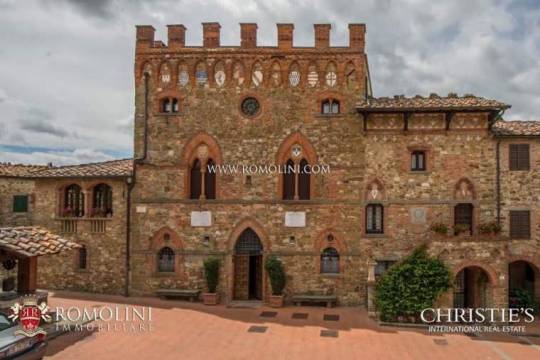
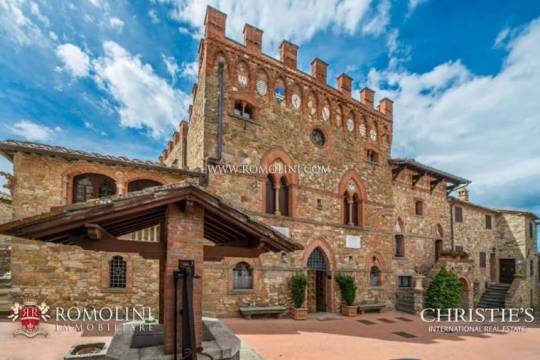
This is real 12th cen. castle in Tuscany, Italy. That it even exists and is beautifully preserved is amazing. It was restored for the first time in 1907 and if you want to know the price, you have to ask, b/c it’s probably outrageous.



The castle (800 sqm) (8,611 sqft) is located in the center of the medieval hamlet, and constitutes one of the four sides of the main square. On the inside (and a small annex) 9 luxury mini-apartments with just as many double (or twin) bedrooms with en suite bathrooms.

How crazy is this? Frescos & carved stone walls perfectly preserved.



And, of course they had to electrify it, put in plumbing, etc. The property is then completed by three independent apartments located in the surrounding hamlet, a gym with dressing room, a garage and some storage rooms.

The interior remains magnificent with lots of the original structure.


Even though it’s split into apts., it still looks like a medieval castle.


Original fireplaces and lots of those wonderful frescos.

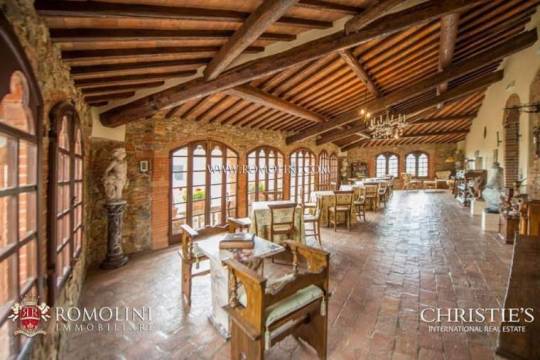
Look at this dining hall.

That carved lion.

Then, it starts to get modern at this point in a guest area.


And, it goes full-on cheap tile shower, sauna and elevated toilet.

The first trace of a hamlet, though, dates back to the Langobardic era, just after the fall of the Ostrogothic Kingdom in 553 AD. The medieval castle itself was probably built in the 12th century and in 1385 it was gifted by the owners to the First Florentine Republic (1115-1434 AD) which used it as a defensive fortress in its long war against Siena.

Its position exposed the castle to numerous attacks and pillages. Uh-oh, it wasn’t in the best location- can you imagine being up here, watching attackers and pillagers storm the castle?

The gardens are stunning. But, the worst episode took place in 1528 and the castle suffered heavy damage. Between the 16th and 17th century the castle was rebuilt and the hamlet developed to the extent it is today.


In 1907 the castle was restored, but the architect who worked on the building modified the complex adding several anti-historical traits. The last restoration, which led to the conversion of the building into a luxury hosting activity, took place in 1997.


Here’s a little guest facility that’s very modern. All-in-all, it’s a good restoration.
https://www.captivatinghouses.com/2020/07/23/12th-century-italian-castle-for-sale-in-tuscany-italy/
#12th cent. medieval castle#ancient tuscan castle#long post#medieval castle restoration#architecture
208 notes
·
View notes
Text
argentina
Here is my story of Argentina. My credentials are that I have I spent the first three hours of my flight to Argentina reading its Wikipedia page plus followup google search results.
Argentina was rich. Then it became poor for no clear reason. It could become very rich again.
Let’s start with the last one.
Argentina is a major agricultural exporter that’s not even tapping its full biocapacity. Without making any prescriptive statements about whether they should, it’s descriptively true that they could be leaning on their natural resources much harder than they currently are.
The wind potential of the Patagonia region (southern third of Argentina) could in theory provide enough electricity to sustain a country five times more populous. But the infrastructure isn’t there to pipe it where it needs to go. Argentina is very urbanized, with 92% of its population in cities. (This is actually weird – if you look at countries ordered by urbanization, you get a bunch of tiny or fake countries like Bermuda or Macau, and then central category member countries like Uruguay, Israel, Argentina, and Japan.)
Argentina had a pretty good nuclear program. Decent record as a locus of scientific progress despite all the political problems and crumbling infrastructure. It’s got a high literacy rate.
It kind of reminds me of... (person who's only been to 7 cities voice) Berkeley?
Okay. Now let’s skip back to 1861. Argentina has won independence from the Spanish Empire. It’s about to get very Italian in here.
At time of independence, Argentina had the familiar-looking South American mix of white+native+black. But soon after independence the state started (0) genociding/expanding into the south (1) enacting liberal economic policies, and (2) encouraging European immigration. Italians liked this idea for some reason, so today, 60% of Argentinians are full or part Italian.
This wave of immigration changed Argentinian society enormously. In this period, Argentina became very wealthy and productive. In 1910 it was the seventh richest country in the world.
Twenty years later, dissatisfaction over the Great Depression fueled a coup and kicked off 50-70 years of political instability.
I like this graph. Look at the Y axis values – this is a log graph.

I have no clean explanation for what happened, but I can at least describe what happened after 1930.
In between coups, Argentina stays neutral in both world wars up until the US pressured it into declaring war on the Axis Powers in 1945. But then the Europe part of WWII ended a month later, so they probably didn't have to do too much. In 1946, Peron takes power.
(Sidenote: why did so many Nazis famously flee to Argentina? Argentina had lots of German immigrants & close ties to Germany. Peron, who'd found Hitler's ideology appealing since he was a military attaché in Italy during WWII, straight out ordered diplomats and intelligence officers to establish escape routes for Nazis, especially those with military/technical expertise.)
I still don’t know much about Peron. There's the socialist stuff: nationalized a lot of industries and improved working conditions. There's the dictator stuff: beating up and firing people to bring them into line, including university teachers (of course) and union leaders that Peron didn't like. He was really liked for a while, and then very disliked, and got exiled to Spain after a decade of rule.
Then there's a phase where no one manages to rule successfully, in part because getting approved by both Peronists and anti-Peronists is hard. This 1955-2003 phase reminds me a lot of Korean history around the same time – lots of military coups and assassinations and journalists getting tortured. Whenever I hit this phase in a country's Wikipedia page it just reads like TV static, interchangeable variable names swinging in and out of scope... even though there's got to be more than that.
When I first started reading about US Republicans and Democrats I got really confused because either they had 0 major differences or 70. Now that I've been in the States for a decade I have a sense for what major visions and underlying values differences they have, but it'd be hard to explain succinctly or in a way that other people will agree with. So something like that has to have been going on with various flavors of anti, sub, and classic Peronism that’s inscrutable to an outsider who’s spending 3 hours on learning about this.
At some point, comically, Peron comes back, wins an election with his wife as vie president, and dies of a heart attack. His wife takes power and does things like empowering the secret police to destroy her enemies, but girlbosses too close to the sun and is ousted after a year.
All this turmoil flattens out somewhat in 2003. I have no idea what went right. They tried Peronism! They tried anti-Peronism! They tried leftist terrorism and rightist terrorism! They tried OG Peron again! They tried Peron's third wife! They tried nationalization and privatization! They tried protectionism and not-protectionism!
Nestor Kirchner, whose rule coincided with the improvement, had "neo-Keynesian" policies, but who knows if that was it. He didn't run for reelection but said "try my wife, she'll do fine", and so she won the next cycle. Cristina Fernandez de Kirchner did well enough that she was reelected. People didn’t like her successor and brought her back as a vice president, but there were what sound like normal-for-South-America levels of corruption scandals during much of her time in office, and last month she was sentenced to six years in prison and a lifetime ban from holding public office.
I have a number of hypotheses as to why Argentina crashed so hard when it had and has so many prerequisites for success, and they all sound stupid when I write them out, so I won’t. But I will gesture at my confusion and amazement.
83 notes
·
View notes
Note
I'm a HUGE fan of your Bending Light series because it painfully tugs my heart in the most satisfying way 💛
You've compared Bending Light to Italian Summer and Falling Dark to Scottish Winter. Can you explain what led to such different tones within the same series? I'm so curious about what inspired this choice. What do the two opposing tones mean to you, and how do they apply to the message you want to convey?
Thanks :))
Aww, thank you and I love this question! How lovely of you to come find me on tumblr and ask. 🥹
And I would say that the overall difference came from the idea of how going through a war would affect these characters. The lightness before contrasted with the darkness after. I love a good character arc, so I couldn't resist the idea of taking them through it and seeing how they changed.
When we first meet the group in Bending Light, they've been through some stuff, but nothing like what's to come. No torture or death, no real loss, no pain or deprivation. And they're teenagers -- delightfully self-focused and oblivious to what's going on around them. I loved that for them and wanted to enhance it, which is why I dropped them in their own little world in a tucked-away place. No adults or structure, a lot of independence and novelty. I wanted to convey a sense of being wrapped up in the wonder of daily life. When you're that age and having those kinds of intense experiences, every day is like a week and a month is a season. It really can't be replicated later. I was very inspired by the film Call Me By Your Name, which does this beautifully and in a similar setting.
And then about halfway through writing BL, I started thinking about how the characters would change based on what the war did to them. How would the trauma affect their personalities and actions and make them grow up? If it drove Draco and Hermione apart, how would they deal with that -- and how would other characters (especially Theo) come into play? I've always loved 8th year stories and it was obvious that I wasn't ready to be done with these characters. And then I also happen to be very familiar with the part of Scotland where Hogwarts is supposed to be located. Which, although incredibly beautiful, can be quite dreary and dark during the autumn and winter. So the dichotomy presented itself to me quite clearly with Falling Dark. The warm Italian summer before the war, the dark Scottish winter after.
Anyway, I hope this is illuminating! It was really fun for me to think about and write it out. Thanks again for asking. xoxo ~Scully
14 notes
·
View notes
Text
Here are some of the references in today’s chapter as explained in the Donougher translation’s notes! The notes are very long - they take up about three pages - so I’ll summarize some of the comments on this part of one paragraph:
“ Its tempest sometimes proceeds from a grimace. Its explosions, its days, its masterpieces, its prodigies, its epics, go forth to the bounds of the universe, and so also do its cock-and-bull stories. Its laugh is the mouth of a volcano which spatters the whole earth. Its jests are sparks. It imposes its caricatures as well as its ideal on people; the highest monuments of human civilization accept its ironies and lend their eternity to its mischievous pranks. It is superb; it has a prodigious 14th of July, which delivers the globe; it forces all nations to take the oath of tennis (1); its night of the 4th of August (2) dissolves in three hours a thousand years of feudalism; it makes of its logic the muscle of unanimous will; it multiplies itself under all sorts of forms of the sublime; it fills with its light Washington, Kosciusko, Bolivar, Bozzaris, Riego, Bem, Manin, Lopez, John Brown, Garibaldi (3)”
1) The “Tennis Court Oath” was when the French National Assembly gathered in a tennis court and took a vow to keep meeting as the National Constituent Assembly until they had a new constitution. This was in 1789, after the king had refused to recognize the Assembly and had also denied it the chance to meet where it had before as the Third Estate.
2) In an all-night sitting after the storming of the Bastille (14 July), legislation was passed to abolish all feudal rights and privileges.
3) These are figures who fought for “liberty” in some form, whether that be for their nation or people within their country. Washington was the first president of the US and the commander-in-chief of the Continental Army during the American Revolutionary War. Kosciuszko led the 1794 uprising against Imperial Russia and the Kingdom of Prussia on the part of Poland and Lithuania, and he also fought for the Americans during their Revolutionary War. Botsaris was a hero of the Greek War of Independence. del Riego was one of the leaders of the mutiny in the Spanish Civil War of 1820-3 that led to the reinstatement of the 1812 Constitution. Bem was Polish and took part in several uprisings there and in Austria and Hungary. Manin led the Venetian Revolution and advocated for Italian unity. Santa Anna fought for Mexico’s independence. John Brown was an American abolitionist and fought for his cause, leading to his execution by the state of Virginia. Garibaldi fought for the liberation and unification of Italy.
The sheer number of references here is impressive, and it works to strongly link Paris to liberty, both for France and the world. The links are both through legislation and through fighting. The National Assembly, in a sense, wrote liberty into the law through its abolition of privileges and through the constitution. At the same time, that freedom was won by the people. Hugo and the note both reference the storming of the Bastille, and Hugo’s list of revolutionary figures further emphasizes a very active form of defending and gaining freedoms. Moreover, while part of the reason Hugo chooses figures from different places is to demonstrate how Paris can illuminate the world (it “delivers the globe”), it also results in a variety of definitions of freedom being encompassed here. Some of these, like Garibaldi’s, are a nationalist kind of freedom. Others, like John Brown, worked for freedom from specific abuses (in this case, he fought for an end to slavery). Their visions may overlap or contradict each other, suggesting a general push for “liberty,” but also a struggle to sort out what exactly that means.
31 notes
·
View notes
Text
Headcanon notes about Fódlani diaspora populations outside of Fódlan
Scothaic ("excellent/elite" in Irish, endonym): northerners from Nemesis Dynasty who fled to Dagda (with the help of Brigidans)
Qispichisqa ("rescued" in Quechua, exonym but eventually adopted by the group): Adrestians from the counter-invasion following First Mach War who didn't (couldn't) return to Fódlan
Akbunuzi ("white horn" in Turkic, exonym): refugees of Sreng-Faerghus conflict, with largest populations in northwestern Almyra
Fideli ("faithful" in Italian, endonym): Southern Church exiles, with largest populations in southernwestern Almyra
Bazargani/Tajari depending on the region ("sell/trade/merchants" in Persian and Arabic, technically exonym but plenty adopted it for themselves): descendants of Leicesterian merchants in Almyra who continue to speak the language
My worldbuilding is that the Dagdans from the First Mach War and Dagdans from the more recent war are actually entirely different groups btw. First one, which I'll call Middle Dagda, is based on Teotihuacan (+other city states across Mesoamerica under its influence), second, which I'll call Lower Dagda, is based on the Inca Empire (except it's on the east coast on the continent instead of west). Although people in the two regions are aware of each other due to trade through Brigid (think of them as Pacific Islands in the Atlantic), the civilizations emerged independently and don't consider themselves to be part of the same group.
More about the diaspora populations under the cut
Scothaics fled from Fódlan to Middle Dagda late in the War of Heroes, and they were originally reviled by Middle Dagdans due to their "barbaric" cultures + bringing over all kinds of diseases. But elites of Middle Dagda soon realized their unsavory reputations made them useful soldiers, which resulted in many Scothaics rising in status through battles, and after a few hundred years of intermarriage they came to be considered just one of the many ethnic groups in Middle Dagda by others there.
Still, many Scothaics clung on their cultural identity as people of Nemesis' Fódlan, and the idea that they should retake the continent from Adrestians (even if they'd rule from Dagda upon succeeding) remained popular among them; they were one of the (but not the only) major factions within Middle Dagda who pushed for the First Mach War. Other Middle Dagdans think Scothaics are LARPing whenever they do the "we were Elites n shit" because by all means they've completely integrated into Middle Dagda now, but they let them have it because it can be politically useful.
Qispichisqas were Adrestians in the post-First Mach War Dagda exploration parties who made their way past Middle Dagda (their recent enemies) to the mountains of Lower Dagda, then got trapped there. The Adrestian government made no effort to retrieve them, but they were saved by the ruler of a prominent city-state near a lake, who they swore undying allegiance to. As that city-state expanded to an empire spanning north and south of the Lower Dagdan coast, they also began to deify the ruler, which was adopted and spread enthusiastically by the Qispichisqa, as it was similar to what the Adrestian emperors liked to do. As a result, the Qispichisqa hold a syncretic faith that's a fusion of early~middle Church of Seiros practices and Lower Dagdan religion.
At the time of canon, they still consider themselves to be followers of Sothis, but they also believe that their ruler is the rightful ruler over followers of the goddess, not the Adrestian emperor; from their view, the current Adrestia (and Fódlan as a whole) has strayed too far from the faith. Qispichisqa don't have a "retake the land" thing going on like the Scothaics because they consider Lower Dagda to be their home and holy land now, but they certainly had no qualms about invading Fódlan once their ruler ordered, either.
Scothaics and Qispichisqas do not get along if they meet each other, and do not consider themselves to part of the same demographic, whether that's Fódlani or Dagdan, mostly for religious reasons. That being said, they don't come into contact with one another that often; again, Lower and Middle Dagda are pretty far away from one another, and the geography would make a war between them very cumbersome, so the two regions try to not step on each other's toes. Sometimes they have scuffles over Brigid, but when that happens both armies are usually more preoccupied with killing Brigidans.
As you might expect from that, Brigidans do not like Scothaics or Qispichisqas alongside other Middle/Lower Dagdans and Fódlanis, and many not-so jokingly say that their ancestors helping Scothaics escape to Dagda was their worst mistake.
Akbunuzis are northern Faerghans in Almyra who crossed the Whitehorn Sea to flee the Faerghus-Sreng conflict, starting at or before 892 with new waves coming in every so often. The community is very poor, with many turning to crime for survival; as a result they have a poor reputation among larger Almyran society. Despite Almyra already being a multi-ethnic and cultural society, the government didn't make much effort to try and integrate the Akbunuzi, partially because they tend to be religiously and culturally rigid, mostly because the government needs there to be criminals for the military to hunt in order to advance their careers and recent immigrants made for easy targets.
Some Akbunuzi attempt to return to Faerghus, but reality is harsh, they are scorned there, too, for being "too Srengi" (as northern and northwestern Almyra also has lots of Srengis or similar ethnic groups and is strongly influenced by their culture + there's some intermarriage) and/or "too Almyran."
Fidelis are Southern Church Adrestians who supported Victoria von Hrym in 1065 and were subsequently exiled. Some went to the Eastern Church in Leicester, but others crossed the Pearl Sea to southwestern Almyra. Fideli are also known for not integrating into Almyran society, and are even more insular than the Akbunuzi. Many have "taking Adrestia back from heretics on the promised day" as their goal, and as a result religious extremism and indoctrination is very rampant within the community; they also have very high birthrates, and other Almyrans often scorn them by calling them biohazards/pests.
Some spread malicious rumors about beliefs of Church of Seiros after bad encounters with the Fideli, and the government makes little effort to dispel those, or to deradicalize and integrate Fidelis; partially because, again, it's legitimately difficult, but also because fueling prejudice towards easy targets is useful for staying in power and justifying constant military operations at the border.
People who identify as Bazarganis/Tajaris, aka Leicesterian-Almyrans in specific instead of just Almyrans with general Fódlani ancestry, usually have ancestors who moved to Almyra after the Leicester Rebellion of 801 at the earliest and mostly during~after the Crescent Moon War in 881. That being said, a lot of Almyrans with Leicesterian ancestry don't identify as Bazargani/Tajari after a few generations; most of their families were fairly well-off merchants who came to Almyra for economic opportunities, so many quickly changed religions and intermarried/integrated into ethnic groups that would provide them better connections.
Because the language(s) of Almyra and Leicester already overlap, Bazargani/Tajari identification is based mostly on religion; usually those who call themselves such are involved in businesses that sell across the border, necessiating that they stay in touch with their homelands.
Akbunuzis, Fidelis, and Bazarganis/Tajaris absolutely do not get along with one another, as old grudges and prejudices carried over from Fódlan gets amplified by the differences in socioeconomic conditions in Almyra.
Akbunuzis think Fidelis give their faith a bad name and that Bazarganjs/Tajaris are selfish and irresponsible for being rich yet not helping other Fódlani-Almyrans; Fidelis hate Akbunuzis for being "enemies of the Saints" (because they're descendants of northerners) and Bazarganis/Tajaris for being unfaithful/apostates/etc; and Bazarganis/Tajaris don't want to be associated with the "backwards and uneducated" Akbunuzis and Fidelis under the umbrella label of Fódlani. Things often get ugly between the communities if news of something happening in Fódlan reaches them, with violence/riots being an expected occurence. The reaction of larger Almyran society to such incidents is usually something like, "oh look the barbarians are being barbaric again, but why do they have to do it in our country."
That being said, the three populations do have something in common, and it's that they tend to not serve in the Almyran military. For Akbunuzis, it's because making money from crime is easier than signing up for the military, and if they try to sign up later, they'll get screened and cut and arrested because of the criminal records/connections. For Fidelis, it's for religious reasons; they won't serve a master other than the goddess and they won't fight for a cause other than taking back Adrestia from the heretics. For Bazarganis/Tajaris, they usually pay instead of sending soldiers, which is legal and the government lets them, but socially, it's a bad look— that's exactly where the stereotype of Fódlanis being cowards come from, and many see it as sign that their allegiances lie with their Fódlani homelands rather than Almyra.
Things presumably get better post-canon once Claude takes the throne; it wouldn't be easy, but getting people with Adrestian and Faerghan heritage on his side was probably good for diplomacy with Fódlan, too.
#fe3h#fire emblem three houses#fe3h worldbuilding#almyra#dagda#brigid#fodlan#slotalks#fe3h headcanons
6 notes
·
View notes
Note
Peronism is only particularly weird because Peron himself was basically just a fascist, it’s just that he wasn’t really able to govern as one because he was swept to power on the back of a worker’s movement and ended up fulfilling the tasks of anti communist social democracy
This is valid as a quick analysis, but as always, there is more nuance. I will try to add more, not in defense of Perón himself, but as for more context on this.
You are correct in the fact that it was Perón who was swept into power by the workers and not viceversa. In October 18 1945, it was the workers by themselves who marched to free Perón and eventually supported his goverments in the ballots and in the streets. One of the idiosyncracies of Peronism is its strong personalism, but I have always believed it's an inverted personalism, if that makes sense, where the popular movement projects and focuses its efforts on the figures of Perón, Evita and those who followed. If anything, Perón's rather convoluted ideological bases and poor decisions did not make for a coherent movement on itself, it was expressed in the collective movement of Peronism.
I will not attempt to argue that Perón wasn't inspired by or even admired Italian and Spanish Fascism. But he was not unique in the historical context of trying to create a "third position" between capitalism and communism. The difference between Peronism and Fascism, and the reason I think the two aren't the same or even really comparable, is that while Fascism emerged from war resentment and racial nationalism (Germany) the desire for colonial expansion and imperialism (Japan) or both (Italy), Peronism emerged from another perspective: from the anti-imperialist sentiment of a country controlled by foreign interests and an oligarchy that enforced the old colonial mindset (eurocentrism and racism, extractivism and the agro-exporter model, worker opression)
Contrary to the popular neoliberal vision of events, Argentina in the 30-40s was not a rich country; it was only for the oligarchy. Like everywhere else in the world, revolutionary movements were brewing; communism, but also fascism (as in extremist catholic and outright nazi movments), anarchism, and of course, the military arm enforcing conservative interests after failed attempts at reform by the UCR (who once were socialists, belive it or not). The Argentine working class was looking for someone to represent their interests after a century (centuries, if we count pre-independence). Peronism evolved in this context.
But why Perón and Peronism? Why not any of those other movements? Well, let's see the mindset of an average Argentine worker at the time. Many were deeply Catholic (worth noting that Peronism also included Jews and Muslims), and concerned about "atheist communism", which, you might dislike the figure of speech, but it was one of the main impressions of communism at the time. They were also, for the most part, discriminated by the oligarchy, either for their status of indigenous and african descent or as recent inmigrants, so they didn't sympathize with nazism or the ultra-catholic right either. Worker unions and movements were active in Argentina, but the years of dicatorship and previous unfriendly and ineffective goverments had undermined their power.
In this context, appears Perón, someone who supports unions, social justice and the development of the country, and whose movement for the first time tries to integrate and support the discriminated underclasses. He is considered both a patriot who stands up against foreign interests, but also someone who stands up to the oligarchic landowners. Not only that, but he has enough cred and power to actually enact what he does.
But this can't be done without the support of an organized popular movement, which the people provide again and again. And thus, Peronism arises.
Now, this all sounds rather counterproducent to socialism and communism, and it indeed it was, especially in Perón's later years, as the movement shattered between the far-right and the far left. Peronism is in many Argentina's version of social democracy, shaped by a violent, convoluted country and it fullfiled the same niche as in other countries: to prevent a violent revolution by conceding rights and benefits to the worker class. Only that in Argentina's complex history, it took a rather unique bent. Even today, it is undeniable that Argentina's working class and the core supporters of "the left" in other countries, in Argentina are peronists or sympathize with peronism, which has of now been identified with the left wing (but that's for another post).
Would have Argentina turned to revolutionary communism without peronism? Difficult to say. If it wasn't Perón, it might have been an actual fascist or ultra-catholic that might have taken power. It could have been a communist revolution, true, but it also could have been repressed in the cycle of military coups and weak democracies. I love alternate history, but it all would have depended on a lot of things one can't explore meaningfully. You can't change what has happened, in any case.
However, what does this mean for the future of socialism and communism in Argentina? Like I said, it is an historical and current fact that the Argentine worker class and unions sympathize by the most part with Peronism. The construction of any socialist or communism movement must deal with that fact, inevitably. How to do it? Well, se los dejo como tarea para la casa.
23 notes
·
View notes